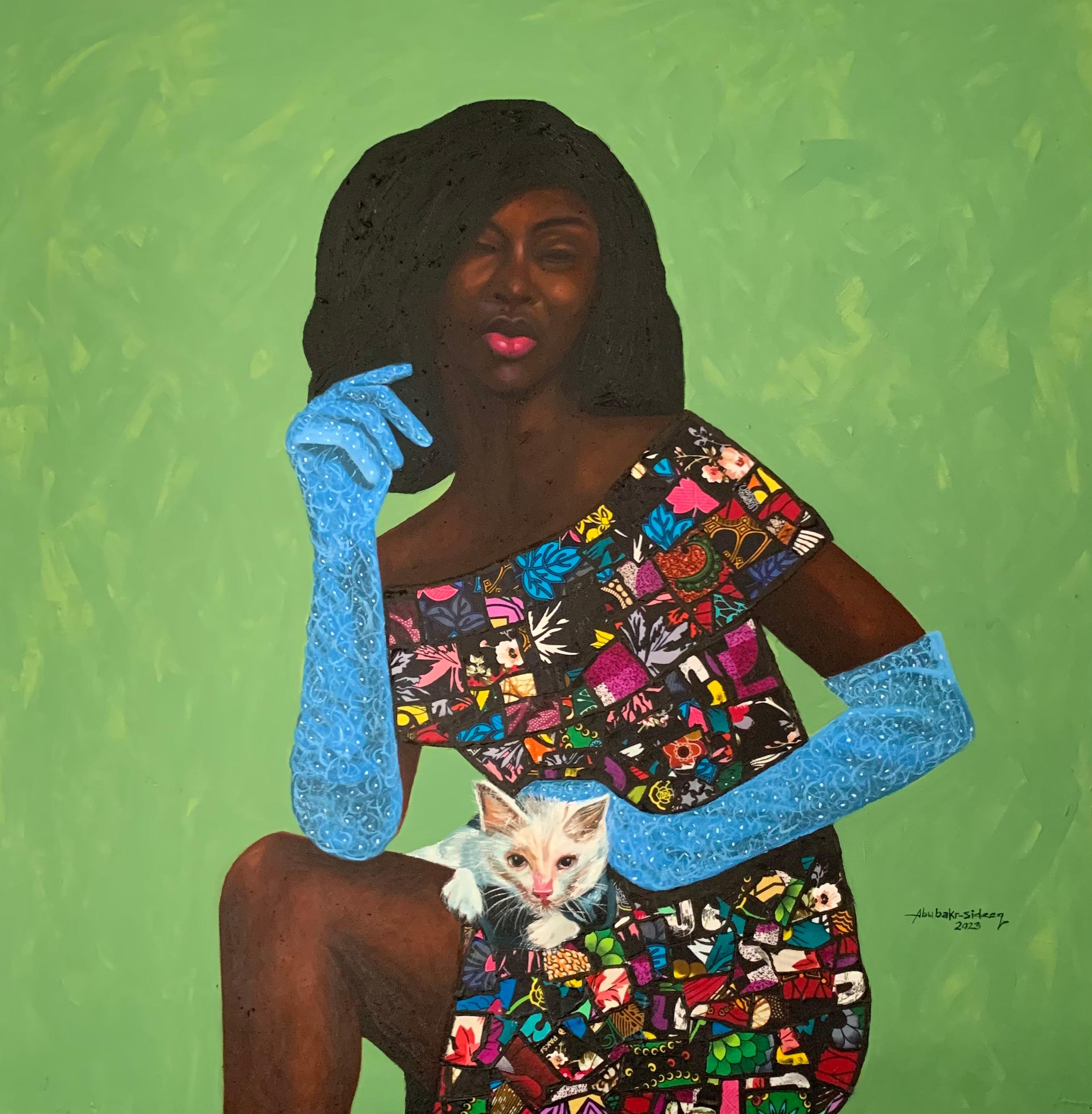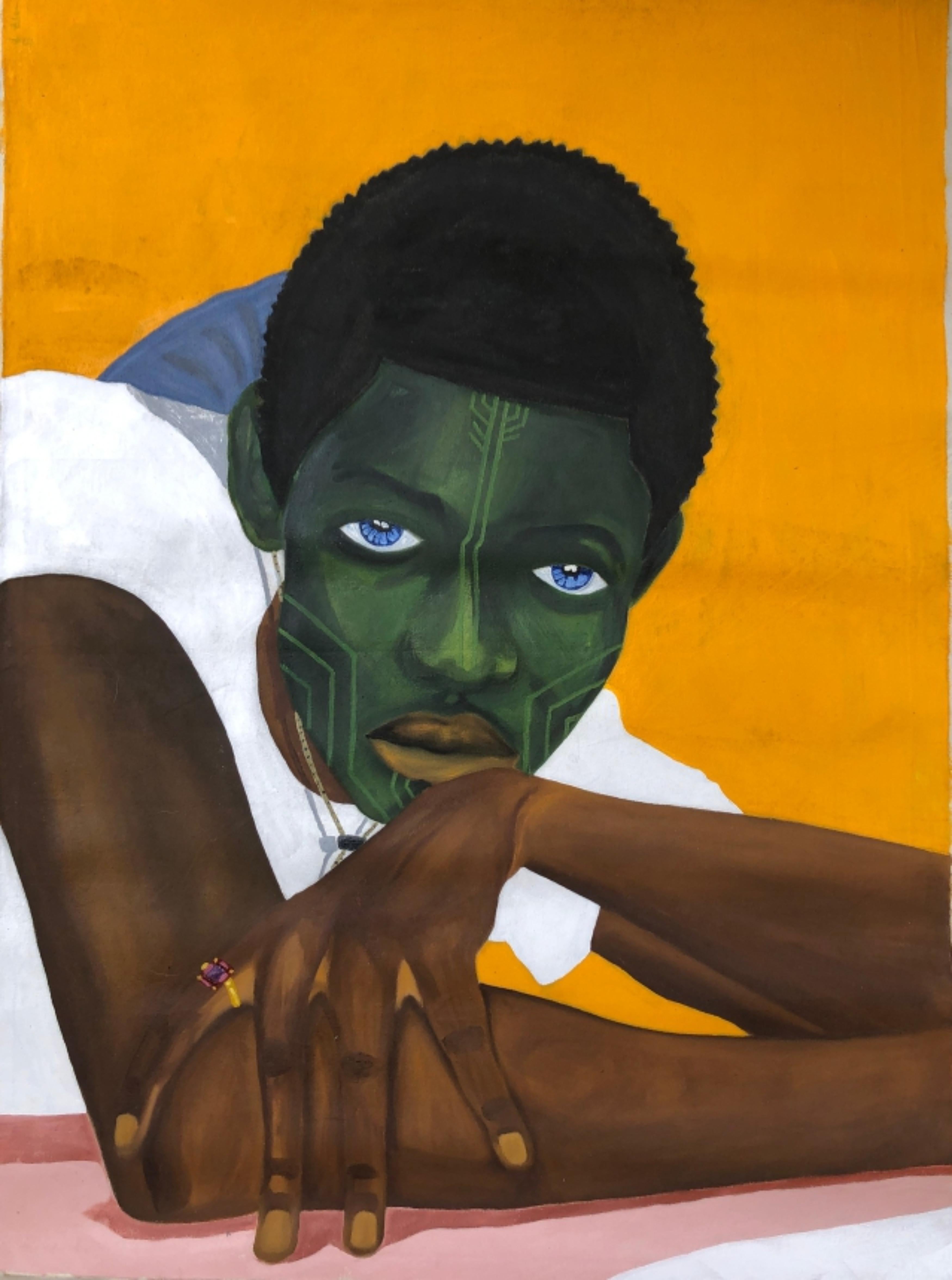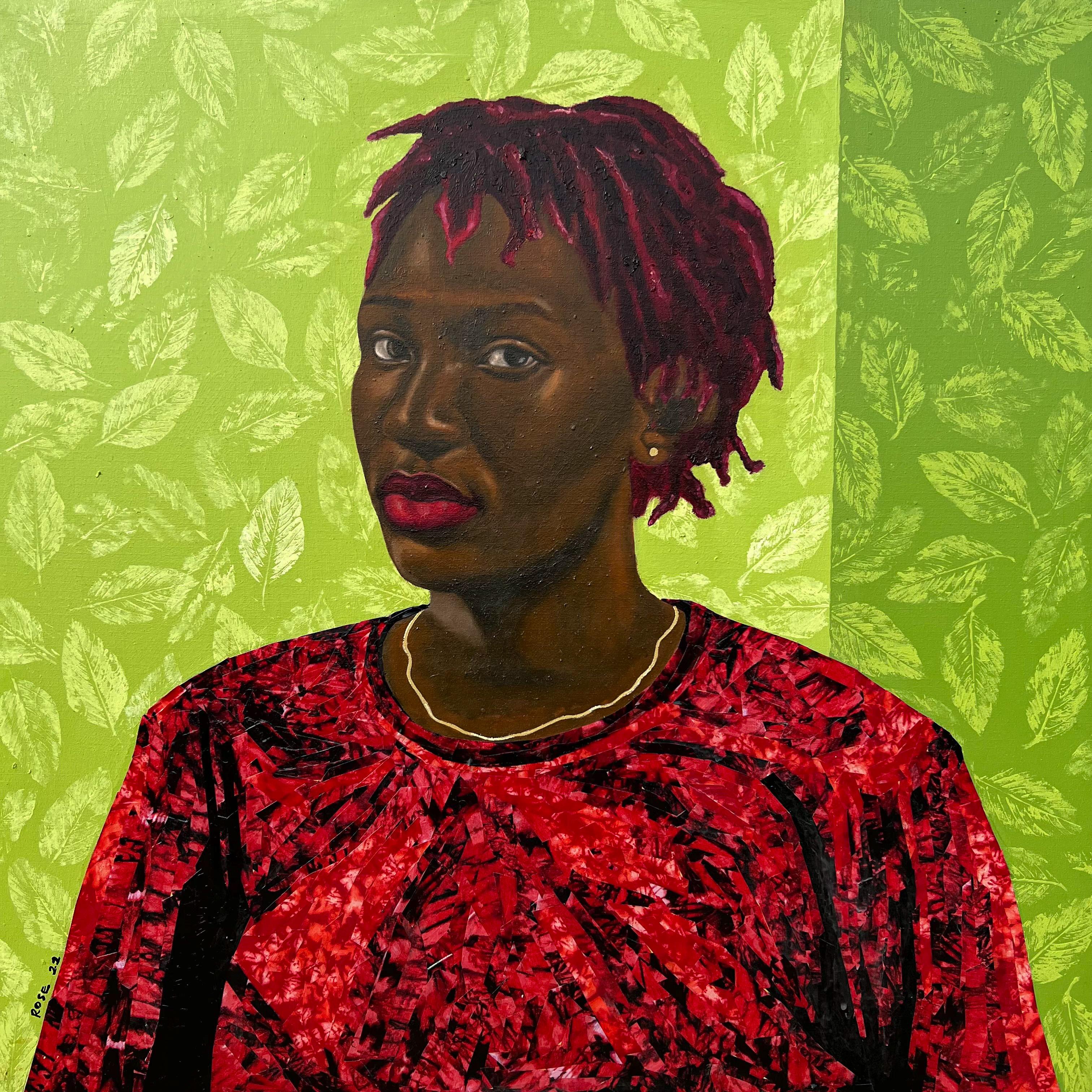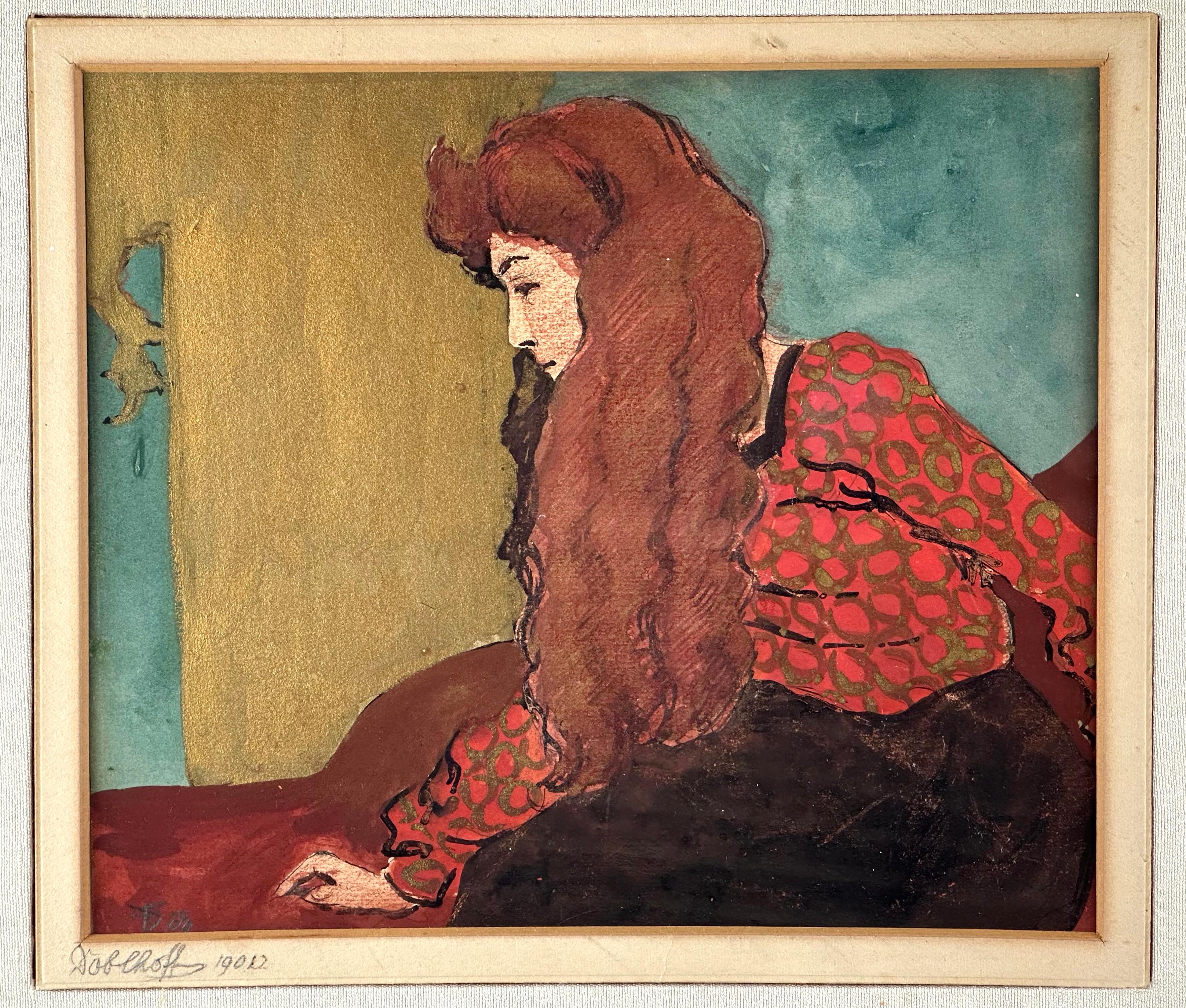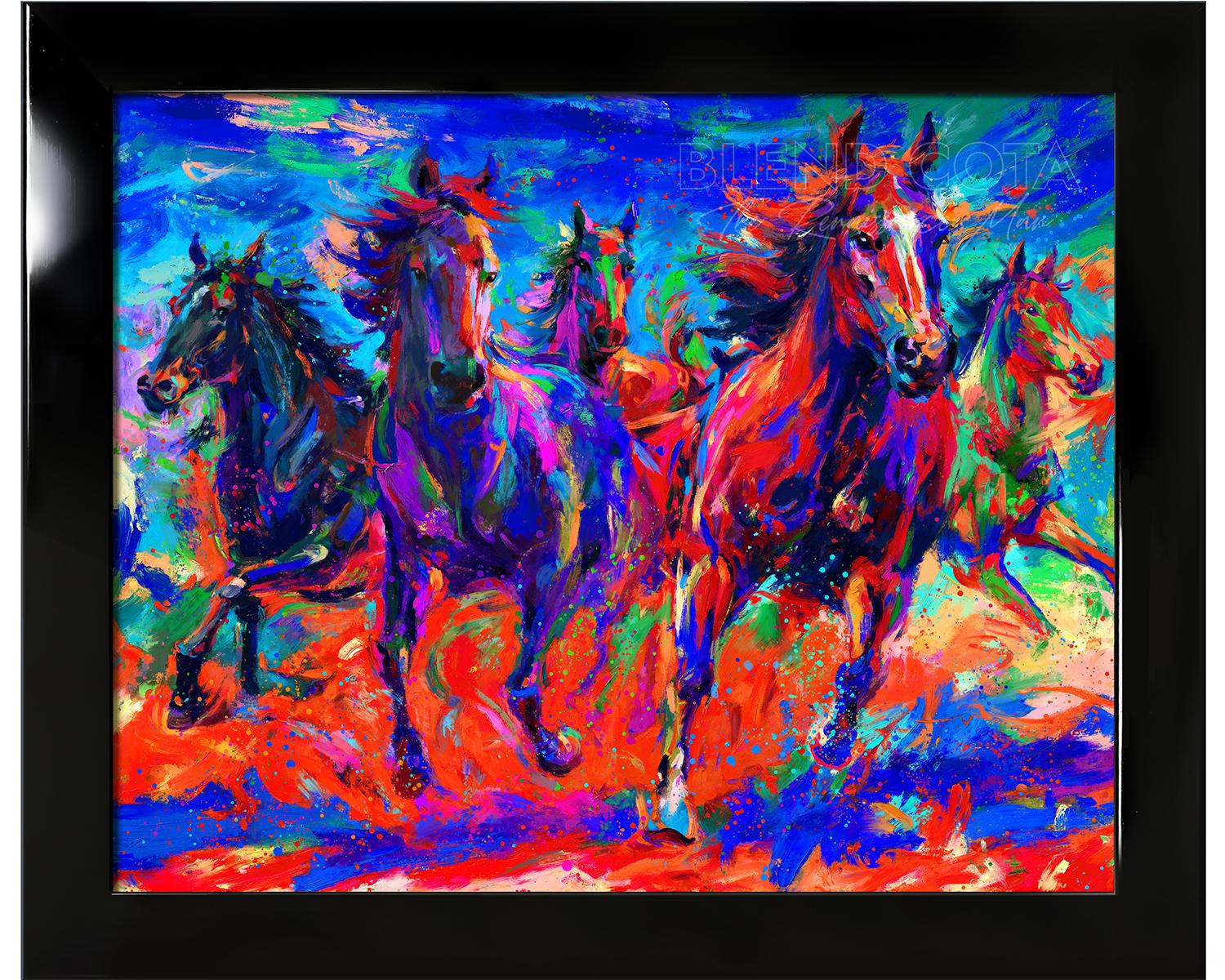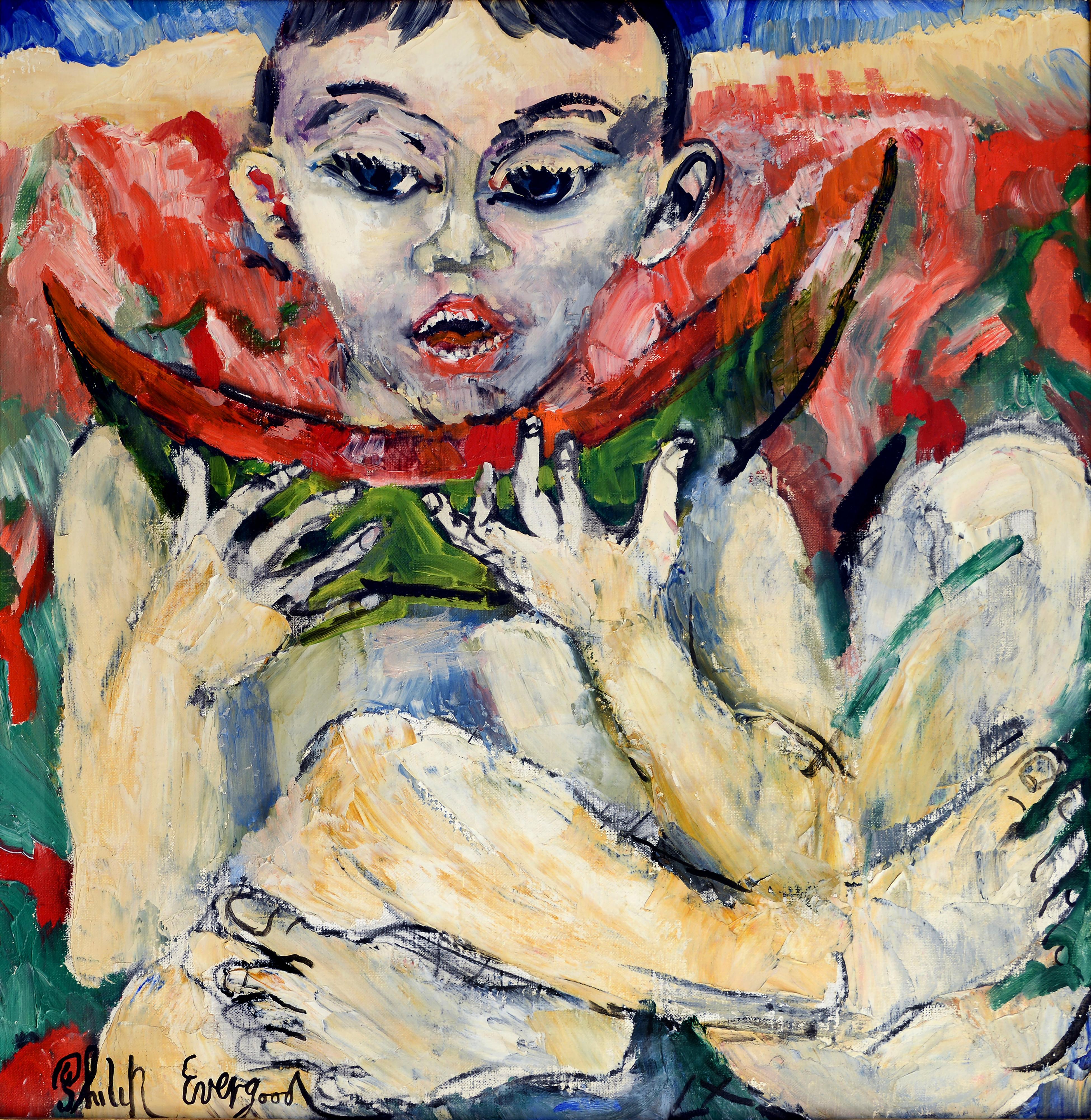Items Similar to Self Portrait. Original Oil Painting Austrian 19th Century
Want more images or videos?
Request additional images or videos from the seller
1 of 8
Joseph Weidner Self Portrait. Original Oil Painting Austrian 19th Century
About the Item
Joseph Weidner
Austrian 1801 - 1870
Self Portrait
Oil on canvas, signed lower left
Image size: 23 x 19 inches (58.5 x 48.5 cm)
Original gilt swept frame
An artist from Vienna, who was a renowned portrait and genre painter in the early 19th century. Among other works, Weidner drew a portrait of Ludwig van Beethoven for which Beethoven acted as a model for the painter.
Weidner Josef (Joseph), was born in Leopoldstadt, Lower Austria (Vienna), June 5, 1801. Son of the master tailor Franz W. (1759–1838) from Austria-Schleswig. Weidenau and the housemaid Katharina W., née Fux, from Winn in Bavaria. His brothers were the actor Karl and the sound artist, teacher and educator Ferdinand.
Weidner in 1831 married Anna Katharina, they had a son the pianist Joseph Weidner. He studied from 1815–29 at the Wr. ABK, winning the 1829 Lampi Prize and was often at their exhibition between 1826 and 1847. Also in 1836 at the exhibition of the Berlin Academy. In the autumn of 1839 he stayed in Brunn for a short time, and in 1841 his works were presented in the Salon des gymnast.
Between 1857 and 1868 Weidner participated in the exhibition of the Austrian Kunstver. Hiss work is strongly influenced by Waldmüller and Karl Rahl. He also worked as a portrait miniaturist.
Weidner died in Vienna, February 13, 1871.
- Creator:Joseph Weidner (1801 - 1870, Austrian)
- Dimensions:Height: 23 in (58.42 cm)Width: 19 in (48.26 cm)
- More Editions & Sizes:1 of 1Price: $11,497
- Medium:
- Movement & Style:
- Period:
- Condition:
- Gallery Location:London, GB
- Reference Number:1stDibs: LU5248753792
About the Seller
5.0
Vetted Seller
These experienced sellers undergo a comprehensive evaluation by our team of in-house experts.
Established in 2007
1stDibs seller since 2014
64 sales on 1stDibs
Typical response time: 2 hours
- ShippingRetrieving quote...Ships From: London, United Kingdom
- Return PolicyA return for this item may be initiated within 14 days of delivery.
More From This SellerView All
- The Distraction, Late 19th Century Oil Painting, OrientalistLocated in London, GBWalter Charles Horsley 1855 – 1921 The Distraction Oil on canvas, signed lower left Image size: 25 x 20 1/2 inches (63.5 x 52 cm) Orientalist ha...Category
Late 19th Century Portrait Paintings
MaterialsOil, Canvas
- Portrait of a Trepanning Surgeon, Early 17th Century Oil PaintingLocated in London, GBOil on oak panel, inscribed top left ‘AETATIS SUAE 32’ Image size: 27 x 35 inches (68.5 x 89 cm) Contemporary style handmade frame This is a portrait of a medical figure from the ea...Category
Early 17th Century Portrait Paintings
MaterialsOak, Oil
- Portrait of a Girl, 17th Century English School Old Masters OilBy Gilbert JacksonLocated in London, GBGilbert Jackson English Active: 1620 - 1650 Portrait of a Girl Oil on panel, signed upper left and Inscribed upper right Image size: 24 ½ x 20 inches Contemporary style hand made...Category
17th Century Old Masters Portrait Paintings
MaterialsOil
- Portrait of William Herbert, 3rd Earl of Pembroke, Early 17th Century PortraitLocated in London, GBEnglish School, (circa 1600) Portrait of William Herbert, 3rd Earl of Pembroke Oil on panel, oval Image size: 29¼ x 23⅞ inches Painted wooden frame Provenance: 176, Collection of Francis Greville, 1st Earl of Warwick. The Trustees of the Lord Brooks’ Settlement, (removed from Warwick Castle). Sotheby’s, London, 22nd March 1968, lot 81. Painted onto wooden panel, this portrait shows a dark haired gentleman in profile sporting an open white shirt. On top of this garments is a richly detailed black cloak, decorated with gold thread and lined with a sumptuous crimson lining. With the red silk inside it’s all very expensive and would fall under sumptuary laws – so this is a nobleman of high degree. It’s melancholic air conforms to the contemporary popularity of this very human condition, evident in fashionable poetry and music of the period. In comparison to our own modern prejudices, melancholy was associated with creativity in this period. This portrait appeared in the earliest described list of pictures of Warwick castle dating to 1762. Compiled by collector and antiquary Sir William Musgrave ‘taken from the information of Lord & Lady Warwick’ (Add. MSS, 5726 fol. 3) is described; ‘8. Earl of Essex – an original by Zuccharo – seen in profile with black hair. Holding a black robe across his breast with his right hand.’ As tempting as it is to imagine that this is a portrait of Robert Devereux, the 2nd Earl Essex, we might take this with a pinch of salt. Its identification with this romantic and fatal Elizabethan might well have been an attempt to add romance to Warwick Castle’s walls. It doesn’t correspond all that well with Essex’s portraits around 1600 after his return from Cadiz. Notably, this picture was presumably hung not too far away from the castle’s two portraits of Queen Elizabeth I. The first, and undoubtedly the best, being the exquisite coronation portrait that was sold by Lord Brooke in the late 1970s and now hangs in the National Portrait Gallery. The second, described as being ‘a copy from the original at Ld Hydes’, has yet to resurface. The portrait eventually ended up being hung in the State Bedroom of Warwick Castle. Archival documents present one other interesting candidate. The Greville family’s earliest inventory of paintings, made in 1630 at their home Brooke House in Holborn, London, describes five portraits of identified figures. All five belonged to the courtier, politician and poet Sir Fulke Greville (1554-1628), 1st Baron Brooke, and were hung in the ‘Gallerie’ of Brooke House behind yellow curtains. One of them was described as being of ‘Lord of Pembrooke’, which is likely to have been William Herbert (1580-1630), 3rd Earl of Pembroke. William was the eldest son of Greville’s best friend’s sister Mary Sidney, and was brought up in the particularly literary and poetically orientated household which his mother had supported. Notably, the 3rd Earl was one of the figures that Shakespeare’s first folio was dedicated to in 1623. The melancholic air to the portrait corresponds to William’s own pretensions as a learned and poetic figure. The richness of the robe in the painting, sporting golden thread and a spotted black fabric, is indicative of wealth beyond that of a simple poet or actor. The portrait’s dating to around the year 1600 might have coincided with William’s father death and his own rise to the Pembroke Earldom. This period of his life too was imbued with personal sadness, as an illicit affair with a Mary Fitton had resulted in a pregnancy and eventual banishment by Elizabeth I to Wilton after a short spell in Fleet Prison. His illegitimate son died shortly after being born. Despite being a close follower of the Earl of Essex, William had side-stepped supporting Devereux in the fatal uprising against the Queen and eventually regained favour at the court of the next monarch James I. His linen shirt is edged with a delicate border of lace and his black cloak is lined on the inside with sumptuous scarlet and richly decorated on the outside with gold braid and a pattern of embroidered black spots. Despite the richness of his clothes, William Herbert has been presented in a dishevelled state of semi-undress, his shirt unlaced far down his chest with the ties lying limply over his hand, indicating that he is in a state of distracted detachment. It has been suggested that the fashion for melancholy was rooted in an increase in self-consciousness and introspective reflection during the late 16th and early 17th centuries. In contemporary literature melancholy was said to be caused by a plenitude of the melancholy humor, one of the four vital humors, which were thought to regulate the functions of the body. An abundance of the melancholia humor was associated with a heightened creativity and intellectual ability and hence melancholy was linked to the notion of genius, as reflected in the work of the Oxford scholar Robert Burton, who in his work ‘The Anatomy of Melancholy’, described the Malcontent as ‘of all others [the]… most witty, [who] causeth many times divine ravishment, and a kind of enthusiamus… which stirreth them up to be excellent Philosophers, Poets and Prophets.’ (R. Burton, The Anatomy of Melancholy, London, 1621 in R. Strong, ‘Elizabethan Malady: Melancholy in Elizabethan and Jacobean Portraits’, Apollo, LXXIX, 1964). Melancholy was viewed as a highly fashionable affliction under Elizabeth I, and her successor James I, and a dejected demeanour was adopted by wealthy young men, often presenting themselves as scholars or despondent lovers, as reflected in the portraiture and literature from this period. Although the sitter in this portrait is, as yet, unidentified, it seems probable that he was a nobleman with literary or artistic ambitions, following in the same vain as such famous figures as the aristocratic poet and dramatist, Edward de Vere...Category
Early 17th Century Old Masters Portrait Paintings
MaterialsWood Panel, Oil
- Portrait of a King's MessengerBy Charles PhilipsLocated in London, GBCharles Philips 1703 - 1747 Portrait of a King's Messenger Oil on canvas Image size: 35 ¾ x 28 inches Original gilt frame King's Messenger The job of a King's Messenger was that of a diplomatic courier, hand-carrying important and secret documents around the world. Some say that the history of the sovereigns' messengers goes back to 1199, but the first known messenger was John Norman, who in 1485 earned 4d (1½ pence) per day for carrying the state papers of Richard III. The silver greyhound on the messenger's badge dates back to Charles II. In 1660, during his exile at Breda, Netherlands, Charles II issued a declaration of amnesty to all those who had opposed him and his father. He used messengers to make his intentions known. In answer to the messenger's question "How will they know me?", Charles reached forward to a silver bowl on the table in front of him. This bowl, with four decorative greyhounds standing proud above the rim, was well known to all courtiers. Charles broke off a greyhound and gave it to the messenger as a guarantee that the message came from him. From that date, the King's Messenger always wore a silver greyhound around his neck. Later, dating from George II or III, a badge with the Royal Arms in enamel, with the greyhound suspended beneath, was worn. A George III example of the King's Messenger Badge, pre 1800, sold for over £30,000 pounds some years ago. The silver greyhounds were minted for each new reign, except the brief one of King Edward VIII. The sovereign's messengers were originally controlled by the Lord Chamberlain, being Messengers of the Great Chamber. When the Foreign Office was created in 1782, the messengers remained common to the three Secretaries of State. Charles Philips was an English artist known for painting a number of portraits and conversation pieces for noble and Royal patrons in the mid-eighteenth century. Philips was baptised in the combined parish of St Mildred, Poultry with St Mary...Category
18th Century Portrait Paintings
MaterialsOil, Canvas
- Portrait of Thomas Cromwell 1st Earl of Essex, English School 17th CenturyLocated in London, GBEnglish School 17th Century Portrait of Thomas Cromwell 1st Earl of Essex Oil on canvas Image size: 24 x 20 inches Giltwood decorated frame PROVENANC...Category
17th Century Old Masters Portrait Paintings
MaterialsOil
You May Also Like
- Woman with Red HairLocated in Wilton Manors, FLBaron Robert Heinrich Freiherr von Doblhoff (1880 Vienna - 1960 ibid.) Woman with Red Hair Ink and watercolor on paper, image measures 6.25 x 7.25 inches; 12.75 x 13.5 inches fra...Category
Early 20th Century Vienna Secession Portrait Paintings
MaterialsInk, Watercolor
- Gallop of the Wild - Original oil on canvas paintingBy Blend CotaLocated in Montreal, QuebecThe wild horse's gallop is a performance of vitality and freedom. Running with the wind without constraining their massive strength and energy, these beautiful animals are almost mag...Category
2010s Expressionist Portrait Paintings
MaterialsCanvas, Oil
- Heart DesireBy Roseleen Labazacchy,Located in Ibadan, OyoArt has the ability to evoke emotions and convey powerful messages that can leave a lasting impact on its viewers. The artwork titled "Heart Desire" is one such piece that captures the essence of following your dreams, no matter what. The artwork features a woman in a contemplative pose, staring into the distance. The woman's facial expression exudes determination and passion, creating a sense of urgency and purpose in the viewer's mind. The use of vibrant colors adds to the artwork's overall vibrancy and appeal. The title of the artwork, "Heart Desire," is an ode to the woman's dreams and aspirations. It highlights the importance of pursuing one's passions, no matter how challenging or difficult the journey may seem. The artwork encourages us to listen to our hearts and follow our dreams, regardless of the obstacles that may come our way. In today's world, where societal norms and expectations often dictate our career choices and life paths, the artwork is a powerful reminder that our dreams and desires are unique to us and must be pursued wholeheartedly. It encourages us to take the leap of faith and pursue our passions, even if it means stepping out of our comfort zones and facing rejection or failure. The artwork's message is particularly relevant to women, who often face societal pressures and expectations that may limit their career choices and life paths. The artwork challenges the traditional narrative of women as homemakers or caregivers and highlights the importance of pursuing one's passions and dreams, regardless of one's gender or societal expectations. In conclusion, the artwork titled "Heart Desire" is a powerful reminder of the importance of following our dreams, no matter what. It encourages us to listen to our hearts and pursue our passions, even if it means stepping out of our comfort zones and facing challenges along the way. The artwork is a testament to the human spirit and serves as a source of inspiration and motivation for all those who dare to dream. Shipping Procedure Ships in a well-protected tube from Nigeria This work is unique, not a print or other type of copy. Accompanied by a Certificate of Authenticity. About Artist Roseleen Labazacchy, a true Nigerian born in the year 2000 and based in Ibadan, Oyo state Nigeria. Roseleen holds a National Certificate of Education in Fine Art from Emmanuel Alayande College of Education, Oyo State. She is a mixed-media painter. Roseleen was exposed to art from a very young age; Her father being an artist himself enrolled her in the popular Nike Art Gallery at a very young age to learn traditional Adire making, a skill she still practices to date. This was how she started art professionally and she has been getting better at what she does since then. In the just-concluded international art exhibition and competition organized by Talentia Foundation, Roseleen Labazacchy who participated in the competition amidst other international artists came first in the Mix Media category and was presented with a certificate of achievement in recognition of her artistic endeavor. Roseleen uses oil and acrylic with fabrics on canvas to consciously project African women's dignity and true African beauty. As an African painter, Roseleen hopes to bring about the emancipation of the true African Women image...Category
21st Century and Contemporary Expressionist Mixed Media
MaterialsFabric, Canvas, Oil, Acrylic
- Untitled, Boy Eating WatermelonBy Philip EvergoodLocated in Miami, FLThe work looks much better in person with snappy bright colors that form a complex abstract composition of interconnected shapes. Hand-signed by artist, sticker label, The Work is Signed lower left - Provenance: Forum Gallery, New York - Label on verso Swann Gallery...Category
1960s Expressionist Portrait Paintings
MaterialsOil
- The King's RingLocated in Ibadan, OyoThe King's Ring is an intriguing artwork that portrays a man wearing a ring. The ring is the centerpiece of the artwork. The painting is oil and acrylic on ca...Category
21st Century and Contemporary Expressionist Figurative Paintings
MaterialsAcrylic, Oil, Canvas
- Contemplative MomentBy Bakare Abubakri-sideeq BabatundeLocated in Ibadan, OyoShipping Procedure Ships in a well-protected tube from Nigeria. This work is unique, not a print or other type of copy. Accompanied by a Certificate of Authenticity. About Artist Bakare Babatunde...Category
21st Century and Contemporary Expressionist Portrait Paintings
MaterialsCanvas, Fabric, Oil, Acrylic
Recently Viewed
View AllMore Ways To Browse
Antique Original Paintings Paintings
Antique Painting Original Paintings
Antique Original Oil Painting
Antique Original Oil Painting Paintings
Antique Oil Painting Original
Antique Oil Painting Original Paintings
Original Antique Oil Painting
Original Antique Oil Paintings
19th Century Black Painting
19th Century Original Oil Paintings
Portrait Of Actor
Portrait Of An Actor
Austrian Oil
Of Austria Portrait
19 Century Oil Paintings
Paintings By Actors
Antique Self
Austrian Oil On
